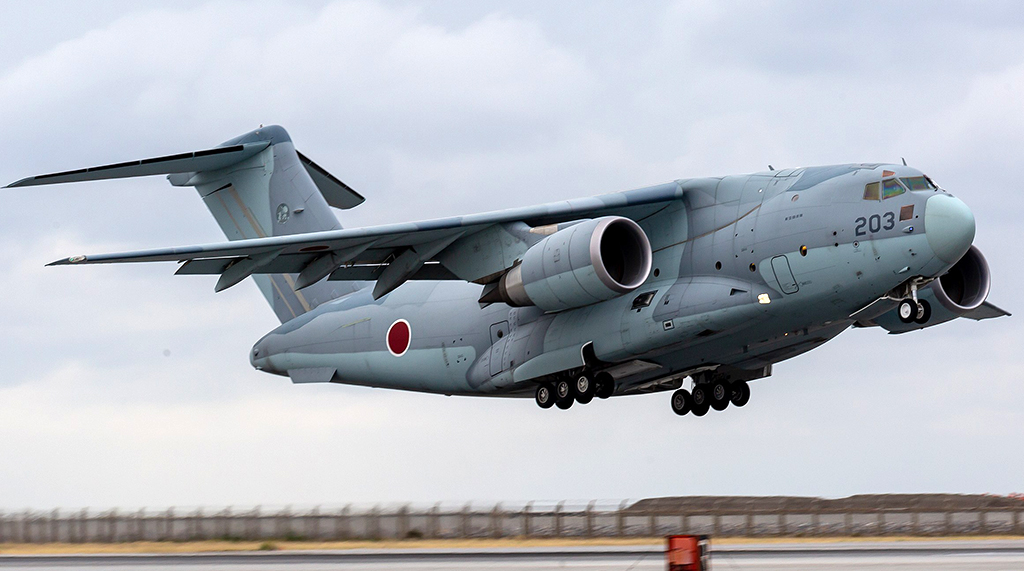Japan is considering using its Kawasaki C-2 tactical transport aircraft to carry and airdrop stand-off missiles.
Japan’s Defense Ministry is considering mounting long-range missiles on Kawasaki C-2 transport planes, The Japan Times reported on Aug. 6, 2023. According to the Japanese media outlet, the plan is to improve the country’s standoff defense capabilities and use the missiles to attack enemy bases such as missile launch sites in counterstrike operations.
“According to the sources, the ministry is considering using a type of missile whose engine ignites in the air after the missile is dropped during flight. This type does not require major modifications to aircraft. The United States is developing related technology. The ministry secured ¥3.6 billion [about 25M USD] in the fiscal 2023 budget in related expenses. Full-scale development is expected to begin after technical research is carried out until fiscal 2024.”
Interestingly, the missiles that would be airdropped by the C-2 would be the U.S. Joint Air-to-Surface Standoff Missile, or JASSM, with a range of about 900 kilometers, set to be introduced for F-15 fighter jets; an air-launched version of the Japanese-made Type 12 SSM (surface-to-ship missile) with a range of 900/1,000 km would also be under development.
The system being considered by the Japan’s Defense Ministry would be similar, for purpose and used missile, to the U.S. Rapid Dragon Palletized Effects System, being used by the U.S. Air Force Special Operations Command aboard the MC-130J Commando II. The Rapid Dragon allows the deployment of long-range cruise missiles using standard airdrop procedures from a cargo aircraft. The AGM-158 JASSM (with a range in excess of 200 nautical miles) and its extended-range version, the AGM-158B Joint Air-to-Surface Standoff Missile – Extended Range (JASSM-ER) with a standoff distance of over 500 nautical miles, are GPS-guided radar-evading cruise missiles with 2,250-lbs penetrator/blast fragmentation warhead. The JASSM cruise missile employs precision routing and guidance in adverse weather, day or night, using an infrared seeker in addition to the anti-jam GPS to find and destroy high-value, well-defended targets. After successful extraction, the AGM-158B JASSM-ER (Joint Air-to-Surface Standoff Missile-Extended Range) missiles extend their wings and turn on the engine.
The reason for using a tactical airlifter to carry cruise missiles is quite simple: compared to most fighters though, the transport planes (like the C-2) would be able to carry more missiles and remain airborne for longer periods.
The Kawasaki C-2 is a long range twin-engine transport aircraft designed to replace the old C-1. The C-2 is capable of transporting 110 people and traveling about 7,600 kilometers with 20 tons of cargo. As of May 2022, JASDF operated 14 out of a planned fleet of 22 C-2s. Japan has also converted the second prototype to an ELINT variant, dubbed RC-2.













